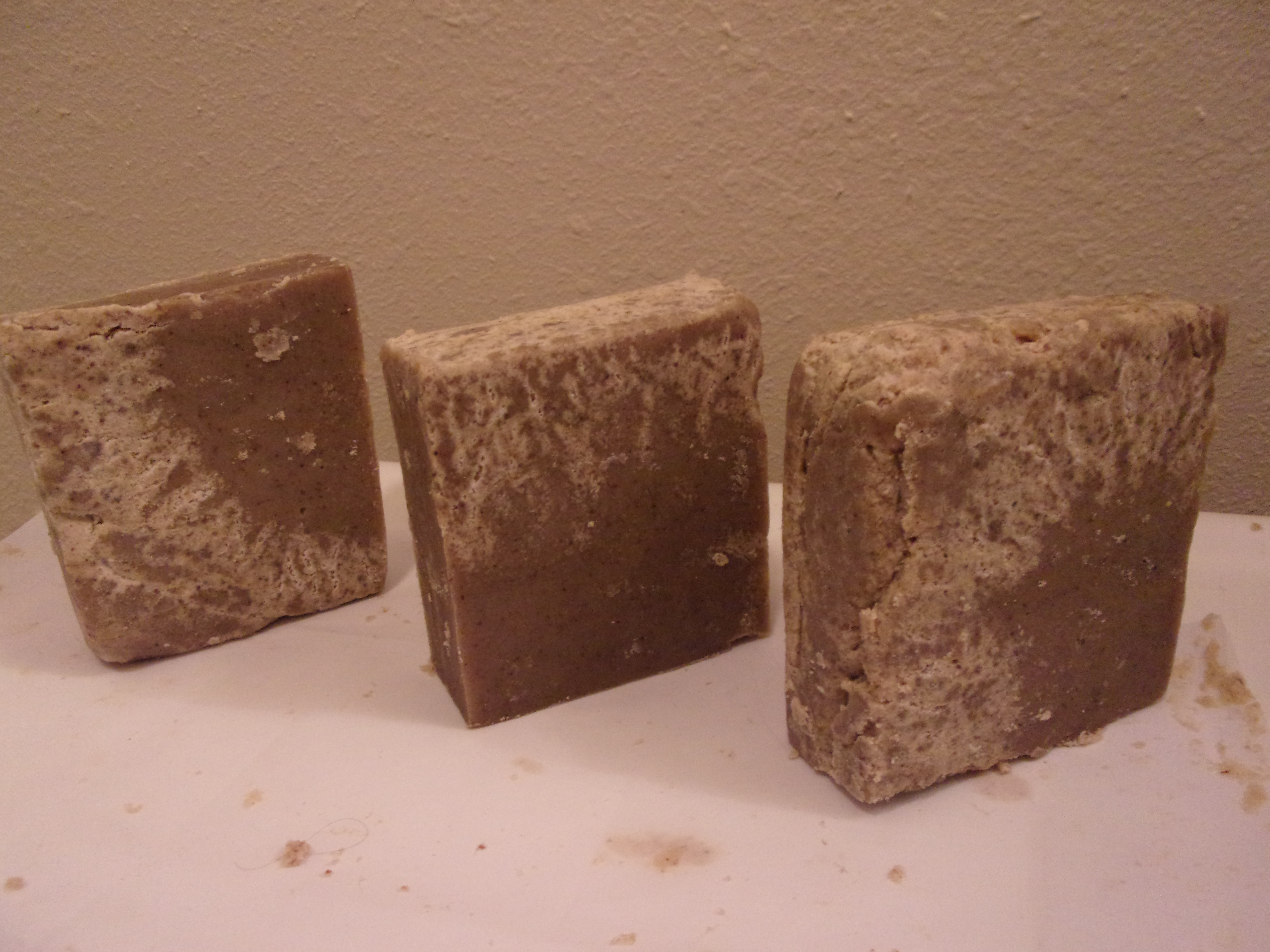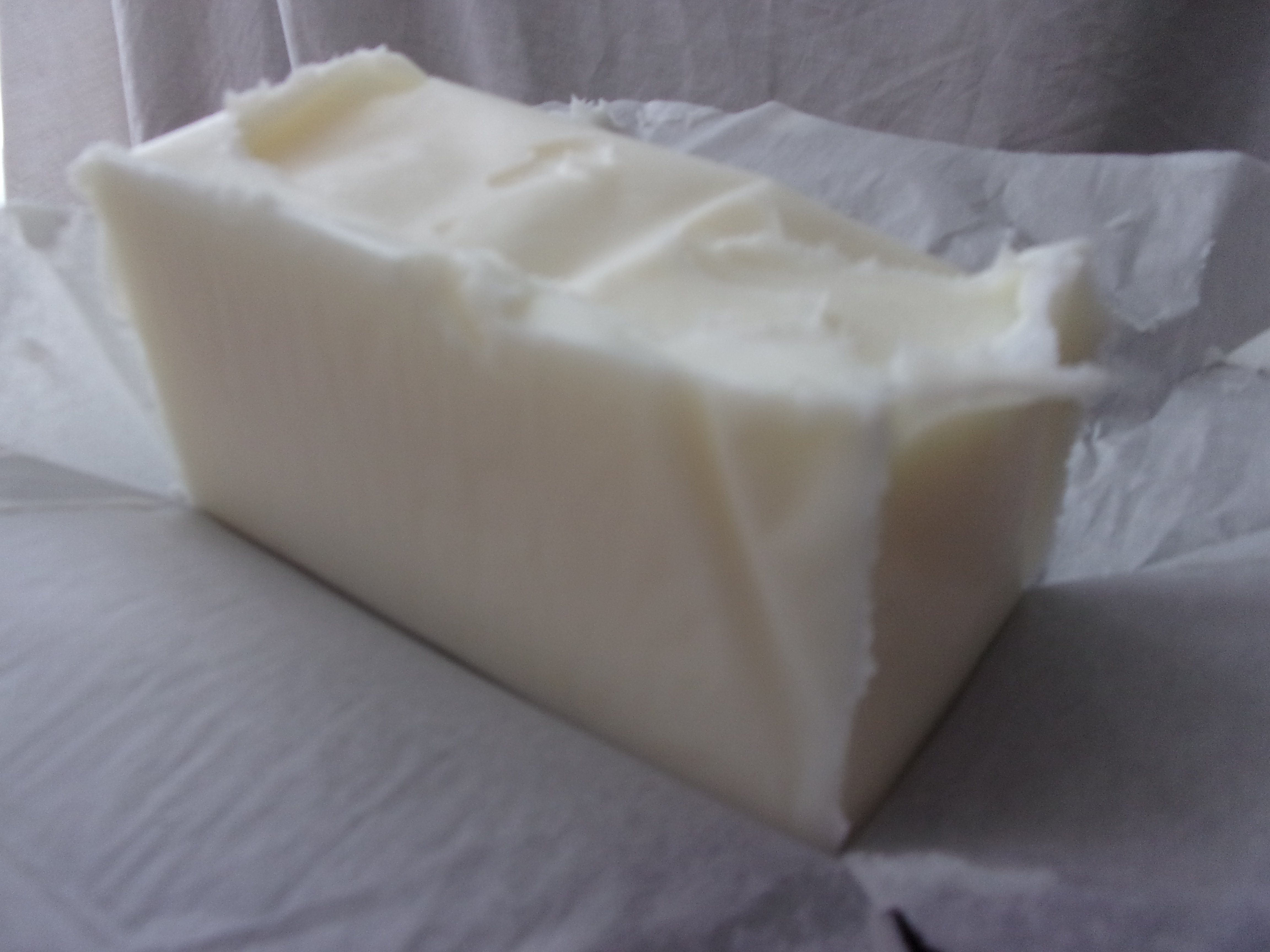How to avoid this soap making blunder.
Avoid this soap making blunder which will cost you time and money. When you are putting together a soap recipe it's always a good idea to check your oils and fats for rancidity before using them. I know this sounds like something that would never get past your nose. Surprisingly though, even mildly spoiled lard which doesn't have an extreme odor could destroy your soap batch.
Be aware that when you are focusing on the weights and measurements of your soap recipe you could potentially dismiss a mild sour or unusual smell of rancidity coming from the lard or any other fat in your storage. Take a moment to simply smell your oils and fats before using them. If lard is spoiled, It can have a mild or strong odor. Either way, do not use it to make your soaps.

If you use a spoiled and/or rancid oil or fat to make your soap it will cost you in materials because you will have to throw everything away. You'll have created an awful soap that will have to be disposed of in the garbage. The scent will be altered along with an ugly appearance and the soap will feel crumbly to the touch!
One way to avoid this soap making blunder is to be wise and know ahead of time what the aroma of fresh oils and fats smell like. But even if you know that lard has a fresh scent that is neutral and mild, don't always assume the container of lard will be fresh the next time you open it. Take a quick moment to smell the fat, if there is any doubt as to it's freshness do not use it.
As you can see here these three soap bars were made with spoiled and/or rancid lard which makes these soap bars worthless.
Proper storage of your fats and oils will help to avoid this soap making blunder in the future.
There is a way to properly store your oils and fats. A cool dark place is ideal. Avoid sunny areas, florescent lighting or heat. Often times oils are packaged in dark glass bottles which helps to preserve the oil from the sunlight or exposure to florescent lighting. Excessive sunlight and heat will make your oils prematurely spoil and go rancid.
Fats such as lard are solid at room temperature. However, lets suppose there is a summer heatwave and temperatures rise to over 100 degrees outside. Inside the house your storage closet temperature reaches up to around 90 degrees. The lard will become gooey and potentially liquify. Depending on whether or not it was sealed up properly it could seep out of the box and make a mess. The same will apply for coconut oil, depending on how its stored it could leak from its container. Coconut oil will become a liquid at around 80 degrees.
Low humidity can be helpful in preserving your fats and oils. It is not advisable to store your lard supply in a bathroom closet that is near a shower room. The presence of moisture, humidity and bacteria in bathroom areas can cause the lard to become rancid especially if it is not sealed tightly.
Refrigerate or Freeze your lard.

One of the best ways to preserve your lard for longer periods of time and avoid this soap making blunder, is to store it in the refrigerator.
Most importantly keep your lard in an airtight container while refrigerating or freezing it. This will help to preserve it long term.
Two types of lard, you'll only use one.
The highest grade of lard is leaf lard. This type of lard is more expensive. It's the internal visceral fat from the pig's organs and loin areas. It's commonly used for making pastries and pie crust. Leaf lard would not typically be used for soap making due to it's higher cost. It might be interesting to make a batch of soap using leaf lard to see if it makes a difference in the soap quality, possibly creating a smooth bar of soap.
Processed lard is the rendered fat from the rest of the pig. It is typically filtered and hydrogenated and bleached. Comes in a block form and can be found in your supermarkets and big box stores. The price for this kind of lard has almost doubled in the last couple of years which is surprising. I have no knowledge that the demand for lard has gone up at all.
This processed lard is commonly used for soap making among other things. The shelf life can be extended by keeping this type of lard sealed up in an airtight container. Keep these containers frozen or refrigerated. You'll avoid the soap making blunder we've talked about which is assuming lard to be fresh when actually it's spoiled and rancid. It will cost you the whole soap batch if you're not careful.